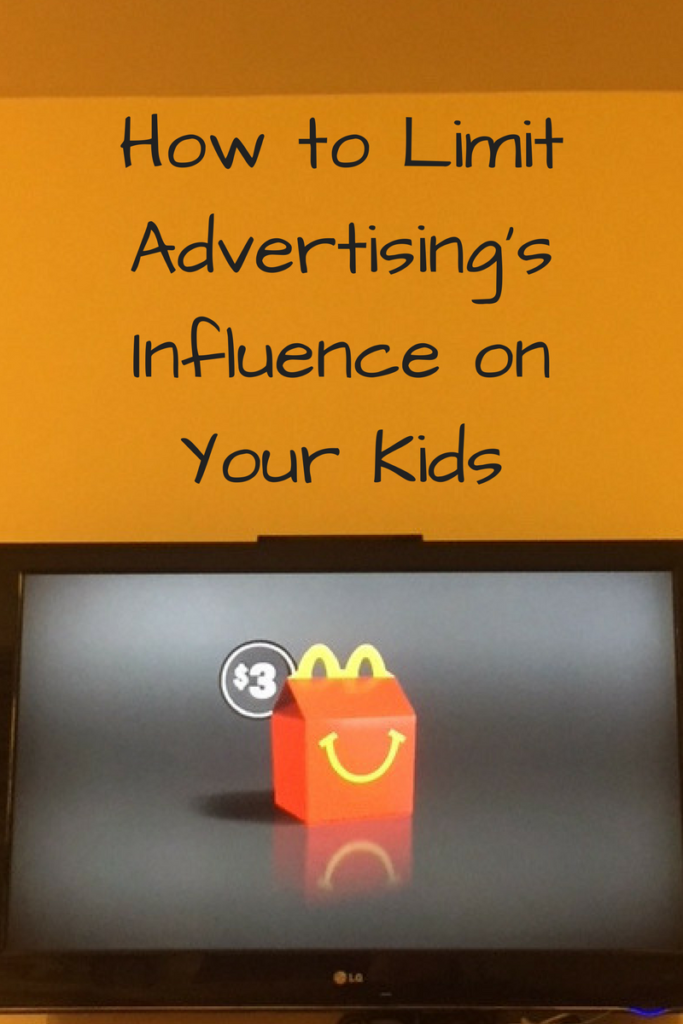
“I think they’re trying to sell you beer,” stated my son after a Bud Light commercial during a football game. While I didn’t really need my kid to be watching beer commercials, I was proud of his analytical skills. After all, he understood that commercials are more than just fun little videos.
An average kid above the age of two sees more than 25,000 commercials a year. Although peers influence what toys children want, commercials play a major role in preferences. Ads also reinforce the mindset of needing to buy the latest and greatest “stuff,” regardless of what you already own. As hardly anyone advertises the benefits of playing outside, eating vegetables, and buying simple toys, most of us want to counteract advertisements’ influence.
My kid is inquisitive, so we’ve used his questions as an opportunity to help him become more savvy about advertisements. Here are four steps that can help you teach your kid to be more media-aware:
Limit their exposure
The simplest way to limit advertisements’ influence is to limit kids’ exposure to them. Minimizing screen time and watching ad-free streaming services like Netflix or PBS Kids are easy ways to do that. But unless you’re totally TV-free, your kids will probably see ads at some point. Whether it’s during the Super Bowl, Macy’s Thanksgiving Day parade, on YouTube, or at grandma’s, ads are everywhere.
Explain the purpose of commercials
Typically, kids under the age of six have difficulty distinguishing between commercials and programming. They may also not understand the purpose of ads. For kids, they’re colorful, high-energy clips of fun. In fact, a lot of Sesame Street bits are commercials for the alphabet!
However, if you explain what commercials are for, I find kids catch on pretty quickly. For our four-year-old, we explained it straight-forwardly: “Commercials are trying to sell you things.” We then made figuring out what those commercials were selling a game. These days, he’s actually quite adept at naming what they’re trying to sell you, even when the commercial isn’t straight-forward. He’s the best at identifying car commercials.
Discuss the tactics commercials use
When it’s hard to figure out what a commercial is selling, we have to talk through the commercial with our son. This is a great place to talk about the tactics advertisers use. In a commercial for a Jeep, we point out that they’re showing the car driving through a stream because people like to be thought as outdoorsy even if they never use the car for that. In a commercial for diapers, they show cute, happy babies because they’re implying that if you use this diaper that your baby will be happy too. The parenting website run by the Australian government has a great list of questions by age to help kids think about various tactics used by advertisers.
While we obviously haven’t touched on the idea that sex sells yet, we will talk about body image in ads sooner rather than later. A surprising number of boys are feeling insecure about their bodies because of societal pressures. Talking about why advertisers only show people with specific body types and how those depictions are unrealistic is important to discuss with both genders.
The more aware kids are of these tactics, the less that the advertisements will influence them. If we don’t watch advertisements with a critical eye, we’ll process them with our limbic system – what some psychologists call the lizard brain. It makes quick, surface-level judgments based on assumptions and short-cuts. But if we can engage our conscious mind, we can think through their implications and not allow them to have as much of a pull on us.
Help them be skeptical of advertisements’ claims
One of advertisers’ major tactics – especially for kids’ products – is to radically exaggerate the benefits of what they’re selling.
When I was a kid, I longed for a doll I saw advertised on TV. (Considering I only watched PBS until I was 8, I have no idea how I saw it. But that’s the ubiquity of advertisements for you.) It talked to you! That was clearly the coolest thing in the world. But the Christmas morning I finally received it, I got so frustrated that I threw it across the room. What happened? Based on the commercial, I thought the doll could carry on a conversation with you. Clearly, that’s what it showed the little girl doing. In reality, it was one of those pull-string dolls that said the same five phrases over and over again. I felt completely misled.
I’m pretty sure I’m not the only one with this type of story. From showing Hot Wheels flying through real flames to Barbie dreamhouses bigger than my actual house, the half-fantasy / half-reality commercial is common in toy advertising. While it’s easy to get drawn in, we just remark to our son: “Toy cars don’t drive through real flames, do they?” He replies, “No, that’s just silly!” That opens the door to explaining that advertisers make things look better or more exciting than they actually are in hopes of convincing you to buy their products.
Unfortunately, you can’t escape advertising. Providing our kids with the right tools to understand commercials – including why wizards are trying to sell you beer – is the best way to push back against their ubiquitous messages.
For more on helping kids push back against society’s harmful messages, check out How to Prevent Raising An Entitled Kid. If you’re interested in joining a group of like-minded parents interested in green living, check out our Green and Sustainable Parenting Facebook group.